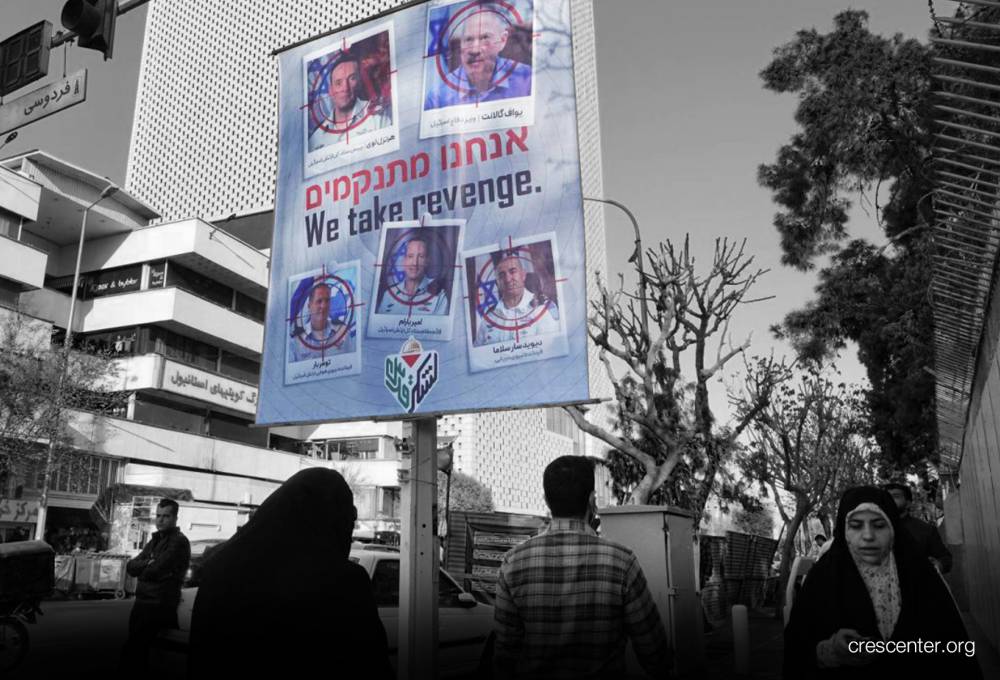When Ali Khamenei spoke before the high-ranking commanders of Iran’s security establishment on Sunday, he did not mention the Israeli attack of the last week and maintained that the accuracy of the missiles and drones launched by Iran on Israel is a “secondary issue”. He added that what matters is not the number of missiles or how many of them hit their targets, but the capability and will of the Islamic Republic to hit Israel directly. It was, indeed, an unprecedent escalation from the Iranian side, since the last time Israeli soil was hit by another state was more than three decades ago – when Saddam Hussein ordered the launch of Scud missiles during the Gulf War. The latest escalation in the Iranian-Israeli conflict has effectively demonstrated that the thin lines maintained by both sides in their conduct of operations can easily be crossed, and the possibility of an all-out regional war will still linger no matter who wants it and who doesn’t.
The Israeli airstrike on an Iranian diplomatic compound in Damascus and the killing of General Zahedi was obviously going to push Iran to respond in kind. One can argue that the Israeli calculus behind the strike was that Iran would let this go, as it did with many Israeli strikes on Iranian installations in the region. It is also possible to maintain that this was indeed carried out to provoke an Iranian response, which could arguably give Israel a free hand in going after Iran and its so-called proxies in the region. While it is apparent that there is no love lost between the likes of Netanyahu, Gallant and Gantz in the Israeli military cabinet, the idea of wiping out the threat of Hezbollah from the northern borders of Israel may sound appealing to all of them. It is also reported that Israeli leadership was ready to respond to the anticipated Iranian attack with an even broader military operation until the call between Biden and Netanyahu led Israel to scale down the operation, and let Iran save face, as it happened. The goal of the attack, thus, became conveying a precise message to the Iranians without provoking them once more, as the missiles successfully penetrated Iranian defenses, something that Iranians couldn’t do on April 13.
It is safe to assume that the latest round of escalation is over for now, as Iranian officials played down the Israeli attack and demonstrated their unwillingness to further the escalatory cycle. But it is also apparent that the current situation is not sustainable, and the region is one Israeli or Iranian strike-gone-wrong away from another round of escalation. As Israel returns its focus back on Gaza with preparations for an offensive into Rafah, the discussion of the role and policies of the White House in the region once again comes into the fore. Since taking over, President Biden and his foreign policy team has not been able to achieve any meaningful success in its Middle East policy. From the failed attempts to revive the JCPOA with Iran to the deadlock in the Saudi-Israeli normalization talks, the administration has now simply been forced to saving the day and preventing the advent of another large-scale conflict in the region. While there’s still a long time until the elections in November, and a lot of things can happen from now until then, the possibility of a second Trump term is also looming large over the region. Crown Prince Mohammed bin Salman and Benjamin Netanyahu, if he can keep his position till that time, will undoubtedly be much happier to work with Trump than Biden, and perhaps we can finally see the long-awaited normalization happening with Trump back in the Oval Office. But even without Trump returning back, the United States needs comprehensive adjustments in its Middle East policy to deter another significant escalation.
Whether Hamas is completely uprooted from the Gaza Strip or not, the Iranian-Israeli conflict will continue to be the driving force of regional power dynamics and as long as there’s no modus vivendi between those two, the region will continue to be embroiled with conflicts, be it covert or overt. Therefore, it can be stated that what comes next between Iran and Israel largely depends on what does the United States do with Iran, its regional network and nuclear program. Israel, despite being in a much secure position vis-à-vis Iran and conventionally stronger than her, is not capable of maintaining the regional order and going all-out against Iran without the political, military, and financial support of the United States. Iran, on the other hand, prefers low-intensity conflicts that keep its adversaries distracted and uses its nuclear program to deter them from attacking it directly. Arguably, Iran is already capable of building the bomb and it keeps that option as the last resort if the situation gets out of control. Thus, aside the diplomatic solutions, without the neutralization of Iran’s asymmetric warfare capabilities and its nuclear program, which seems impossible at this point with the United States not seeking an engagement in a high-intensity conflict in the region, the situation will continue to stay in a limbo. With no effective mechanism to monitor Iran’s nuclear program post-JCPOA, and the inability of the Arab countries and Israel to establish a significant deterrence against what they consider as the Iranian threat, the region is open to continuation of hostilities. While certain segments of the Israeli elite may seek an all-out war that would significantly reduce Iran’s capabilities, it can not be possible without the United States, which itself is not interested in it.
Iranian-Israeli conflict: What next?

